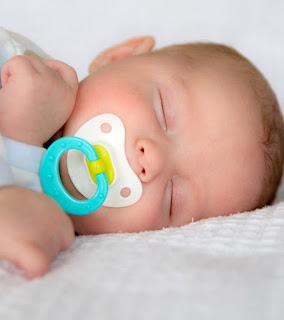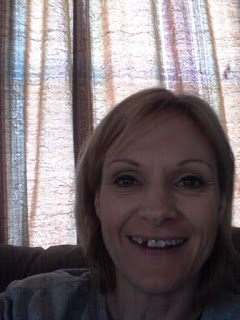Fatty liver disease: Symptoms to note on your skin
The 9 Best Pacifiers To Soothe Your Baby In 2023, Per A Pediatrician
The Nanobebe Baby Pacifier is made with "flexible, silicone materials and is a one-piece pacifier," meaning it's fabulous for newborns. It's also easy to wash, inexpensive and beloved by more than 12.000 Amazon reviewers for having "the most comfortable fit" — thanks to its flexibility!
Ahead, our pediatric expert highlights the benefits of using a pacifier, how to shop for the right one, how to clean one and more.
What are the benefits of using a pacifier?There are some benefits noted by the American Academy of Pediatrics for pacifier use in infants up to 6 months of age.
"For the calming affects, non-nutritive sucking can provide during minor procedures such as immunizations," Flaherty-Hewitt tells The Post. They also provide a protective effect on the incidence of Sudden Infant Death Syndrome (SIDS) when offered to an infant when they are placed to sleep.
"For premature infants, pacifier use can help develop the sucking reflex," she adds.
How often should a pacifier be used?Of course, pacifiers can be helpful in younger infants to calm them during times of stress, while offering pacifiers to younger infants at the start of sleep can offer a protective effect against SIDS.
"It's important to not offer the pacifier if you your baby is hungry; it should not replace meals," Flaherty-Hewitt advises. "If you plan to breastfeed, some recommend waiting to offer a pacifier until breastfeeding is well-established, usually about three to four weeks."
What age do you stop using a pacifier?According to Flaherty-Hewitt, current recommendations are to try and discontinue pacifier use by age 6 months. "The risks or complications of pacifier use tend to outweigh the benefits around that age," she notes. "After age 6 months, there can be an increased risk of ear infections."
The golden question: how do you encourage your baby to "give up" a pacifier?If your little one has an emotional attachment to their pacifier, it can be difficult to give it up when they become of-age.
You can try replacing the pacifier with another soothing item, like a favorite stuffed animal or well-loved blanket. However, older children may need some coaxing.
"I've had success with planning to 'mail' he pacifier to Santa or another imaginary figure to give to the babies because now 'you're a big girl/boy,'" Flaherty-Hewitt recommends. "Alternatively, wrapping up the pacifier to give to a new sibling has also worked well."
Safety notes to keep in mind when using a pacifier, according to an expertAhead, Flaherty-Hewitt outlines important safety information when it comes to using a pacifier:
According to Flaherty-Hewitt, one-piece models of pacifiers are safest. Two-piece models may break and present a choking hazard.
How to properly clean a pacifier, according to an expertThink about it: pacifiers spend plenty of time in your baby's mouth, so you want to ensure you're cleaning it properly.
First, pacifiers should be dishwasher-safe."They can be boiled or run through the dishwasher before first use and thereafter," she recommends. "Make sure to squeeze any water out before giving to the baby to avoid any burns."
Also, clean pacifiers this way until 6 months of age. After that, frequent washing with soapy water should be adequate.
It's important to note that parents should not clean the pacifier by sucking on it themselves and give it back to the baby. "This may cause harmful mouth bacteria to be shared," she adds.
Check out the
New York Post Shopping section for more content.The Best Sterilisers In 2023, Tried And Tested On Baby's Bottles, Pacifiers And Other Gear
FAQWith midwife and One Born Every Minute star Lara Basini
What's the difference between steam sterilisers, cold water sterilisers, microwave sterilisers and UV sterilisers?Cold water sterilisation involves adding a special fluid or tablet to water, then fully submerging your items for about 15 minutes, after which you can remove things at any time up to 24 hours and they'll remain sterile. Its upsides are that you don't need heat or electricity, though parents do complain that it leaves a chlorine smell on your equipment.
Electric steam sterilisers use hot steam to clean your items, and are relatively easy and quick to use. Most models offer a fast sterilisation cycle. They can be bulky and take up space on your worktop, however, and can be pricey. You do also need to clean and descale them regularly.
Microwave sterilisers, my personal preference because they're fast and relatively cheap, are more compact than standalone electric models, but in fact also use steam to sterilise items. They're easier to clean, as there's no metal element to descale – you simply heat the container up in the microwave with the bottles inside. You'll need to make sure your model fits inside your microwave, and it's worth having sterilisation tablets on hand in case the oven breaks or you have a power cut.
UV sterilisers are expensive but effective against the widest range of microorganisms, and the equipment comes out not needing to be rinsed, cooled or dried. Because they use ultraviolet light to kill germs, there's no water, steam or chemicals to contend with either, though the cycles tend to take longer than with other methods, and they're not really suitable for thin breast pump tubing as the UV rays won't penetrate them.
When should I use a steriliser?The NHS recommends sterilisation for the first 12 months of a baby's life. It's important to note that whatever method you choose to use, everything needs to be washed in hot soapy water as soon as possible following feeds, and rinsed in cold running water, prior to sterilisation.
What can I use a steriliser for?In addition to bottles, pump parts, pacifiers and cutlery, parents can sterilise frequently-used toys as invariably these will go into your baby's mouth.
How do I choose which is the best steriliser for me?Price tends to be the first deciding factor, particularly if you aren't yet sure how often you'll be using your steriliser. After that, it's worth considering what your priority is: speed, ease, capacity, portability?
Also think about who else might be using it. If you know you'll have siblings of grandparents helping out, the UV option rules out the risk of burns, for example. You might also need more than one method to fall back on: such as cold water tablets if you travel a lot but an electric steriliser for home use.
Lastly, will you be mainly breastfeeding, pumping or formula feeding? If it's the former, you won't need much in the way of equipment so can get away with something cheaper and more straightforward, whereas if you're exclusively pumping or formula feeding, you'll rely heavily on your steriliser and will need something more heavy-duty with a bigger capacity.
How do I descale a steriliser?You'll only need to do this with an electric steriliser, and instructions will vary according to the manufacturer's guidance, although a good rule of thumb is to descale it every 4 weeks, or every 14 days if you live in a hard water area.
First remove the trays and give it a wipe over. Then add one cup of white vinegar to the base of the steriliser, turn the appliance on and wait for it to boil. Soak and clean the trays in the meantime in warm soapy water.
Once the machine has finished boiling, pour out the liquid and give the base a really thorough rinse. Then dry and reassemble it.
10 Best Dishwasher Basket For Baby Bottles
10 Best Dishwasher Basket For Baby BottlesBaby productsRecombu Product Features Munchkin
Munchkin 11471 ratings
More info 2 Product Features Oxo Tot
Oxo Tot 9614 ratings
More info 3 Product Features


Comments
Post a Comment